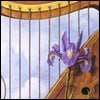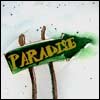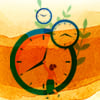Most people have heard the story of Adam and Eve and their affair with a snake and a tree in the Garden of Eden. Few realize that it describes the essence of the struggle of every human being. Here is a brief summary, according to how it is told in the Zohar and explained by the Kabbalists and Chassidic masters:
Adam and Eve began as creatures of light. Light, for the mind, implies surrender to that which is higher and beyond, verging on anomy. As opposed to darkness, which says, “I am here. I exist.” And ultimately, “All is me. There is no other.”
The primal state of the human mind is a paradise of light; a state where all that matters is to reach to the light and to allow more light to enter.
There is a single temptation in that paradise, and that is to know the darkness as well. “What could be so terrible about knowing the darkness?” says the mind. “To know darkness is to know as G‑d knows, for from Him come all things.”
So Eve desired to know not just the act of eating the fruit, not just the taste of the fruit, but to know that I am eating this fruit. I as something separate from the Oneness. I as a meaning all to itself. I as otherness to the Infinite Light, as darkness.
The instant the human mind began to explore that realm of darkness, of“I am,” of “Who am I?” of “How am I?” —immediately the entire cosmos was thrown into disorder. Why? Because, although Man contains a G‑dly spark, Man is not G‑d.
For G‑d to know darkness is to create darkness. That is part of creating light. There must be beings with a sense of otherness for a world to exist—and then, into that world the light will shine. But for us to know darkness is to become darkness and to imprison light within it.
That is because the human mind is the lens of creation, where all things come into focus. Until passing through that lens, all is no more than a blur, a semi-morphous idea that could take many different meanings. It is our perception and consciousness that place bounds upon G‑d’s thoughts to solidify them as concrete things. In that process of resolution and definition, we define and bind ourselves as well.
That is how we become bound to the struggle of darkness and light. That is why, once the two coexist side by side in our minds, the world falls into chaos. Not a place remains as light without darkness or darkness without light. Where there is beauty, there is pain; where there is love there is selfishness. Kindness shares its bed with egotism and confidence with cruelty. In the most pristine palace of holiness in this world, the closets are filled with skeletons. In the deepest cavern of depravity, the most sublime souls are held captive. All this extends out of the confusion of the human psyche, out of the confusion of me knowing I.
When the world was renewed after the Great Flood, the Zohar tells us, Noah resolved to escape the prison of I. He planted a vineyard, made wine and drank until he had lost all sense of self-awareness. So, for him, for that time, the darkness was gone. But nothing had been repaired. So the darkness continued to grow.
It was Sarah who first repaired human consciousness. She descended into the lair of the snake, into Pharaoh’s palace, into the ultimate Kingdom of Ego. There she was offered a partnership with the darkness, with Pharaoh who said, “The earth is mine. The river is mine. I created all of it. I created even myself.”
Sarah, holding tightly the rope thrown to her by Abraham, arose from there untouched. She was the first to come face-to-face with the temptation of self-idolatry and walk away unimpressed. Where Eve entered into a dialogue with the snake, Sarah told him to get lost.
Therefore, the Zohar concludes, Sarah was buried in the cave where Adam and Eve lie. For it was she who granted them their first rest.
If darkness had never become mixed with light, it would have eventually found its place and become benign. Now that it has entered into battle, it has only one destiny remaining: To renounce its cloak altogether, and to reveal its inner essence. That darkness itself shines a truth that light on its own can never know.
For, in truth, the I can never be dismissed. Egotism is not just another nasty trait that we can grow out of. To feel I is to feel human; it is as much a parameter of our existence as time and space. The remedy for the I is not to wipe it out, but simply to put it into context.
“Yes,” you say to yourself, “I have this bizarre sense that there is only one I and all the other billions are only thems and yous. It feels as though I am G‑d, the only one true existence and all else is no more than an extension of me.”
“But this is absurd. Clearly, I did not create this place. And I am obviously not in control of it. I, as all the others, am no more than a created being, an artifact of a Greater Mind. If so, why do I have this lonely sense of I? It could only be that my Creator desires I experience His world this way in order that I could know Him. So that I could have an inkling of knowing as He knows, so I could connect to Him with all my being.”
This is the idea of the mitzvah: A deed that is done for no reason other than that this is the desire of the Higher Consciousness. Wherein lies all its beauty—for such a deed can only be done by one who possesses an ego.
In the darkness of ego lies the key to grasping the very Essence of G‑d, for whom there is, in truth, nothing else but Him.
If darkness had never become mixed with light, it would have eventually found its place and become benign. Now that it has entered into battle, it has only one destiny remaining: To renounce its cloak altogether, and to reveal its inner essence. That darkness itself shines a truth that light on its own can never know.







Join the Discussion